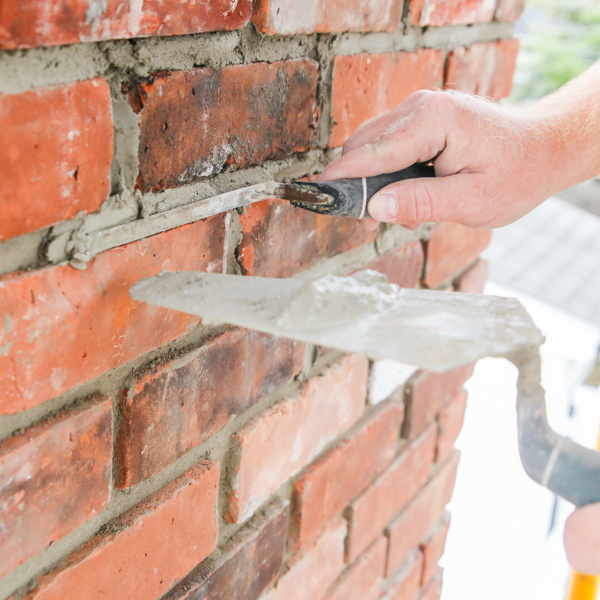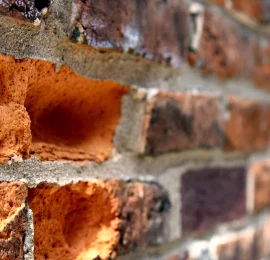Top-notch Roofing Contractor Services for Your Home
Top-notch Roofing Contractor Services for Your Home
Blog Article
Opening the Tricks of Sustainable Stonework Building Practices for Eco-Friendly Buildings
Amongst the myriad methods to green building, lasting masonry building stands out as a time-tested and sturdy technique that holds a wealth of untapped potential. From the selection of materials to innovative building and construction methods, the secrets to attaining sustainability within masonry building and construction are diverse and interesting.
Advantages of Lasting Stonework Building
Accepting sustainable stonework building practices not just minimizes environmental impact yet additionally uses long-term economic advantages to building contractors and areas. By using materials like recycled bricks, obstructs, and rocks, home builders can substantially reduce the carbon footprint of their tasks while advertising resource effectiveness. Furthermore, lasting stonework construction techniques, such as appropriate insulation and thermal mass residential or commercial properties, can improve energy performance within structures, leading to minimized functional prices in time.
Additionally, the toughness and durability of stonework structures add to long-term financial benefits. Buildings created utilizing lasting masonry methods frequently call for less repair and maintenance, equating to cost savings for contractors and homeowner. The long life of masonry products also makes sure that frameworks remain steady and safe and secure, decreasing the requirement for constant remodellings or substitutes.
Eco-Friendly Masonry Materials
Utilizing eco-friendly stonework products is a critical step in the direction of boosting the sustainability of building methods and lessening ecological impact while making best use of long-lasting economic benefits. Sustainable masonry products are sourced, generated, and utilized in a way that decreases general ecological influence. Lasting concrete obstructs incorporate recycled aggregates and might feature improved insulation homes, contributing to power performance in structures.
In addition, all-natural products like adobe, rammed planet, and straw bundles offer exceptional thermal mass buildings, decreasing the requirement for heating and cooling power. These products are typically locally offered, promoting local economies and lowering transportation-related carbon exhausts. By choosing eco-friendly stonework materials, building and construction jobs can significantly reduce their ecological footprint and add to the creation of much healthier, more lasting built atmospheres.
Energy-Efficient Stonework Techniques
Power performance plays a vital role in improving the sustainability of masonry construction methods. One vital energy-efficient stonework technique is the use of thermal mass, which entails incorporating dense materials like concrete or block right into the structure's structure to take in and store heat.

Developments in Sustainable Stonework
Current improvements in sustainable masonry practices have brought about innovative techniques that pervious concrete are improving the building and construction sector. One such development is the development of self-healing concrete, which uses bacteria installed within the concrete to heal fractures autonomously. This breakthrough not just decreases upkeep expenses but likewise boosts the resilience of masonry frameworks, adding aci 301 to their sustainability.
Another notable technology is the usage of recycled accumulations in masonry building and construction - masonry contractor. By incorporating materials such as smashed ceramic waste or recycled glass right into concrete mixes, builders can minimize the environmental influence of building tasks while maintaining architectural stability. This technique not only diverts waste from land fills however likewise conserves natural deposits, making it a key advancement in lasting masonry construction
In addition, the combination of electronic style tools, such as Building Details Modeling (BIM), is changing the method masonry frameworks are intended and constructed. BIM enables even more accurate computations, lowered product wastage, and improved power performance, eventually leading to more lasting structure methods. These advancements collectively represent a promising future for sustainable masonry building and construction in the age of environmentally friendly structures.
Future Trends in Stonework Sustainability
With the innovative strides made in lasting stonework practices, the future patterns in stonework sustainability are poised to further change the construction industry. Among the vital trends shaping the future of masonry sustainability is the enhanced combination of innovation. Developments such as Building Information Modeling (BIM) and virtual fact simulations are being made use of to optimize masonry construction processes, bring about minimized material waste and boosted energy performance in buildings.
Furthermore, the growth of novel lasting materials is readied to play a considerable role in improving the eco-friendliness of masonry building and construction. masonry contractor. Technologies like self-healing concrete, recycled aggregates, and bio-based binders are gaining traction for their ability to minimize environmental impact while maintaining structural honesty

Final Thought
To conclude, sustainable stonework construction techniques use numerous benefits for green structures. By using green products and energy-efficient techniques, stonework can add to a much more lasting developed setting. Advancements in sustainable masonry are continuously being developed to further enhance the environmental performance of buildings. Looking in the direction of the future, the trend of stonework sustainability is anticipated to expand, causing even more ecologically friendly and energy-efficient building practices in the years to find.
Report this page